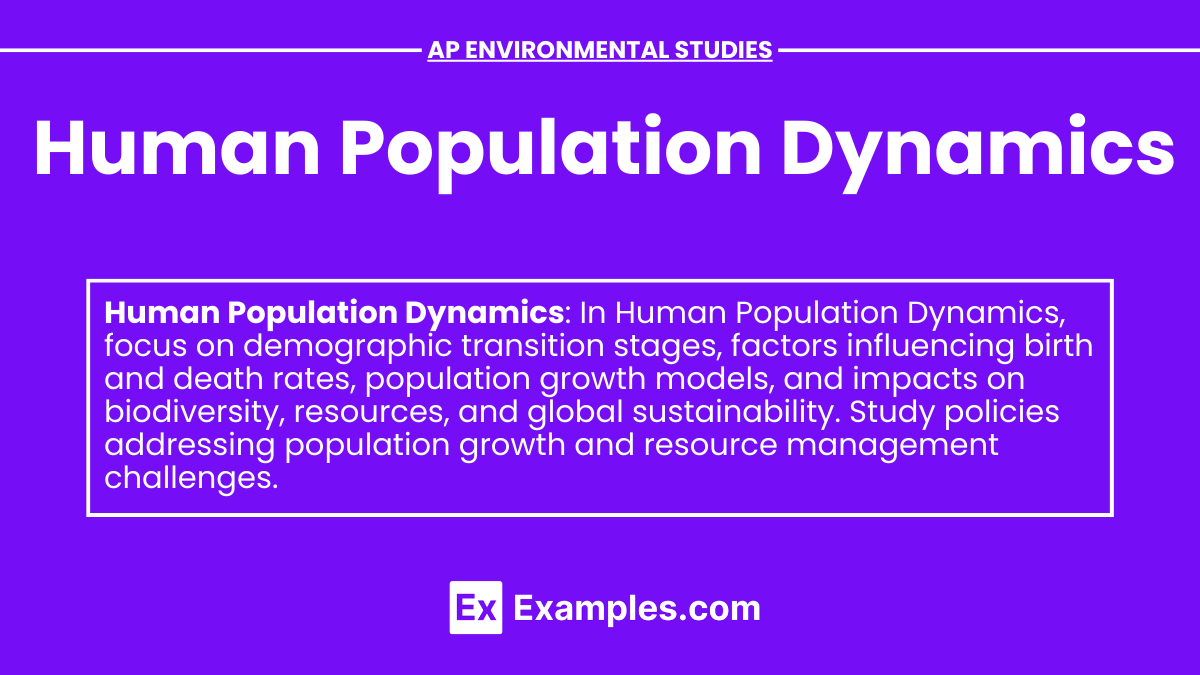Human population dynamics, a key concept in ecology, examines how populations grow, shrink, and move, profoundly impacting the structure and function of every ecosystem. The interplay between birth rates, death rates, and migration shapes population size and distribution, influencing biodiversity by altering species interactions and resource availability. Understanding these dynamics is crucial for assessing human impacts on the biosphere, as rapid population changes can lead to resource depletion, habitat loss, and significant shifts in ecological balance.
Learning Objective
Human Population Dynamics explores how populations change over time due to birth rates, death rates, immigration, and emigration. Learning objectives include understanding demographic transition stages (pre-industrial to post-industrial), analyzing population growth models (exponential and logistic), evaluating impacts on biodiversity and resource use, and assessing population policies’ effects. Students should grasp how population dynamics influence environmental sustainability, resource management, and socio-economic factors globally, preparing them to address challenges like urbanization, food security, and conservation in the AP Environmental Studies exam.
Key Concepts
- Population Size and Density
- Population Size: The total number of individuals within a defined area.
- Population Density: The number of individuals per unit area or volume.
- Population Distribution
- Refers to how individuals are spread across a given area.
- Can be clumped, uniform, or random.
- Age Structure
- The distribution of individuals among different ages in a population.
- Influences birth rates, death rates, and growth rates.
- Sex Ratio
- The ratio of males to females in a population.
- Can affect reproductive rates and social structure.
Factors Influencing Population Dynamics
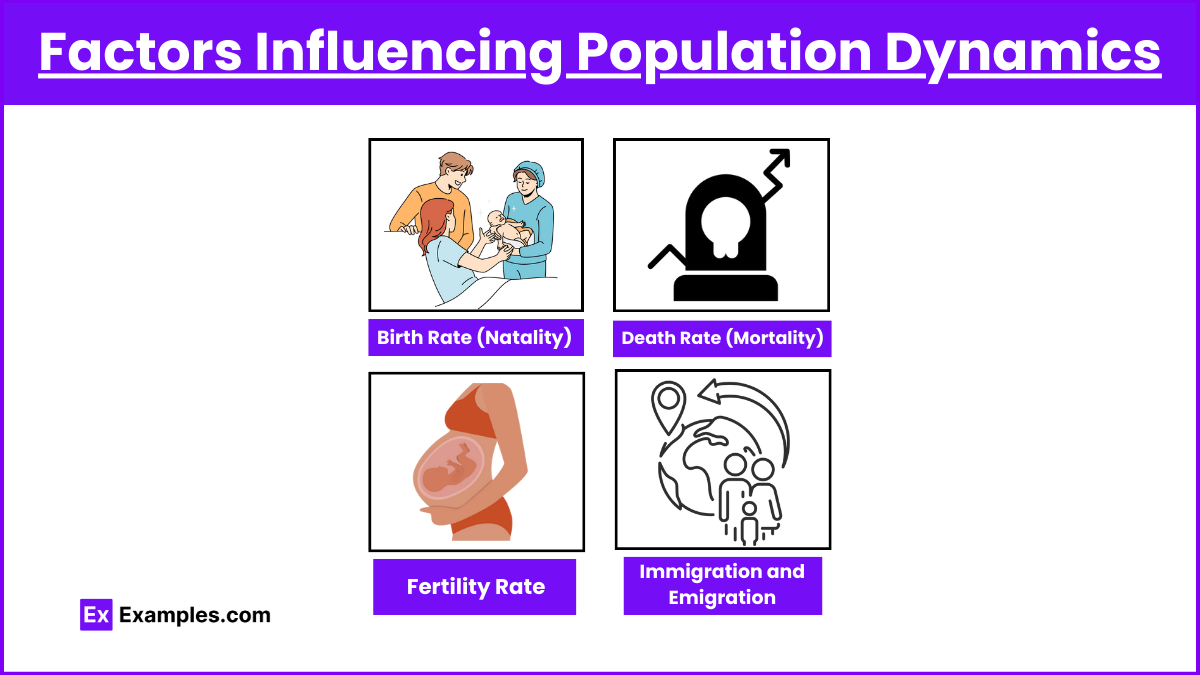
- Birth Rate (Natality)
- The number of live births per 1,000 people per year.
- Influenced by factors such as economic conditions, cultural norms, access to healthcare, and government policies.
- Death Rate (Mortality)
- The number of deaths per 1,000 people per year.
- Influenced by factors such as healthcare quality, nutrition, living conditions, and disease prevalence.
- Fertility Rate
- The average number of children a woman is expected to have during her lifetime.
- Total Fertility Rate (TFR) is a key indicator for population growth.
- Immigration and Emigration
- Immigration: Movement of individuals into a population.
- Emigration: Movement of individuals out of a population.
- Both affect population size and composition.
Population Growth Models
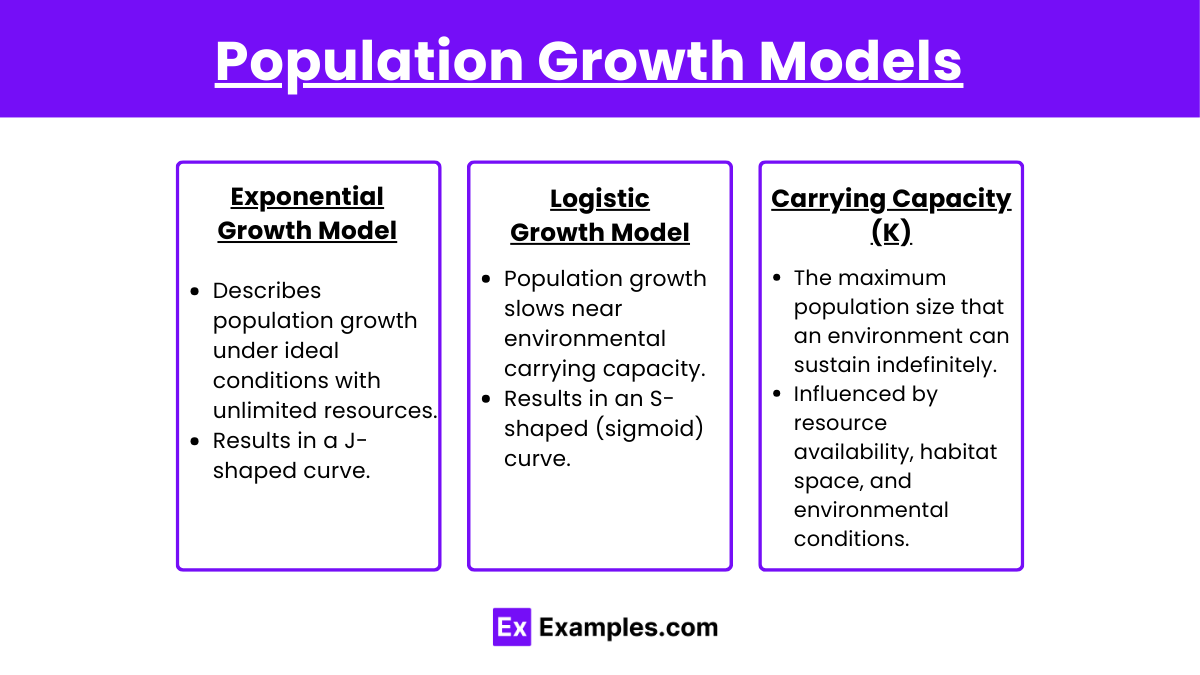
- Exponential Growth Model
- Describes population growth under ideal conditions with unlimited resources.
- Results in a J-shaped curve.
- Logistic Growth Model
- Describes population growth that is initially exponential but slows as the population approaches the carrying capacity of the environment.
- Results in an S-shaped (sigmoid) curve.
- Carrying Capacity (K)
- The maximum population size that an environment can sustain indefinitely.
- Influenced by resource availability, habitat space, and environmental conditions.
Demographic Transition Model
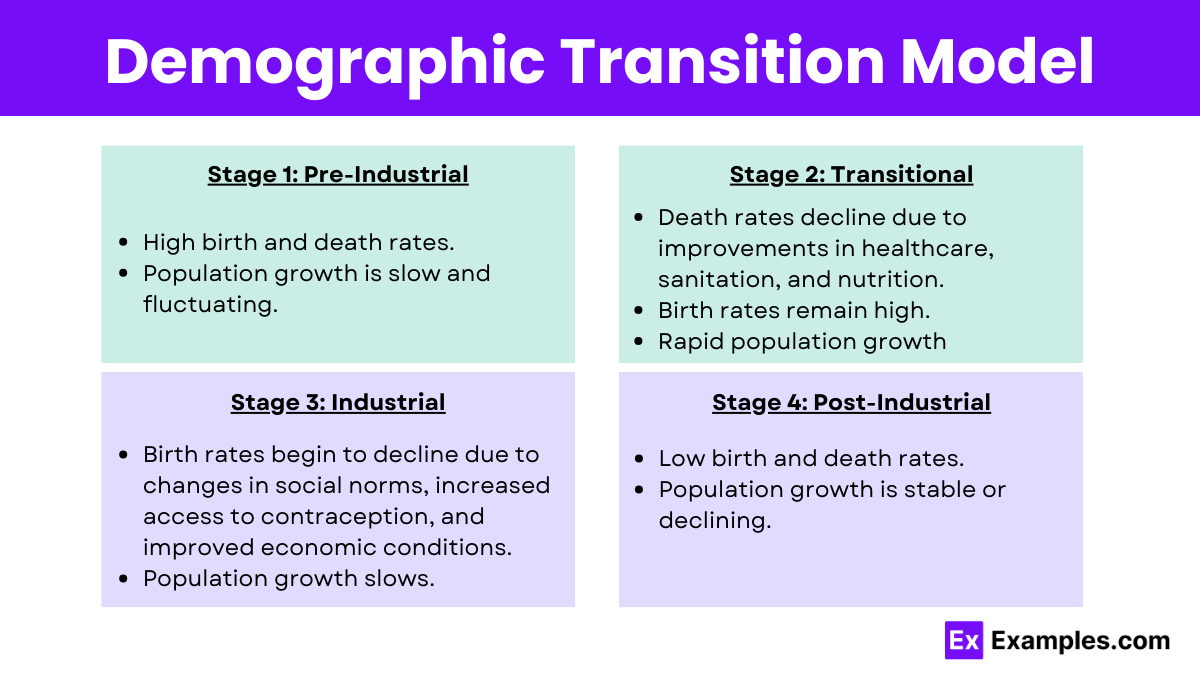
- Stage 1: Pre-Industrial
- High birth and death rates.
- Population growth is slow and fluctuating.
- Stage 2: Transitional
- Death rates decline due to improvements in healthcare, sanitation, and nutrition.
- Birth rates remain high.
- Rapid population growth.
- Stage 3: Industrial
- Birth rates begin to decline due to changes in social norms, increased access to contraception, and improved economic conditions.
- Population growth slows.
- Stage 4: Post-Industrial
- Low birth and death rates.
- Population growth is stable or declining.
Population Policies
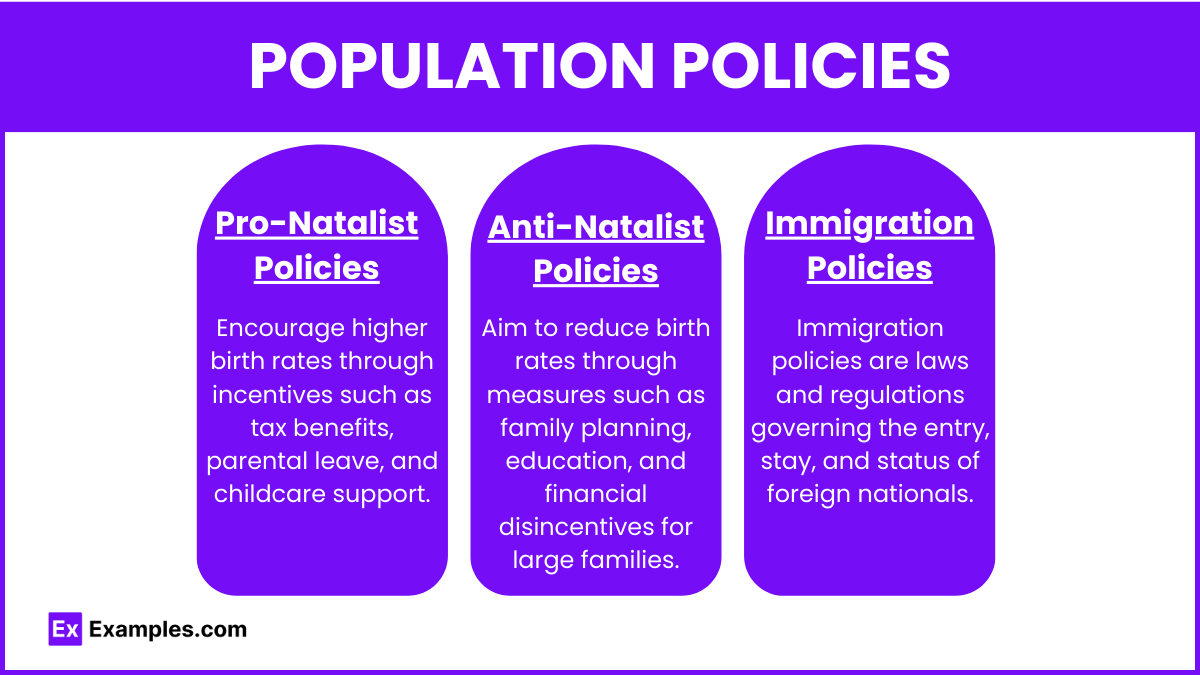
- Pro-Natalist Policies
- Encourage higher birth rates through incentives such as tax benefits, parental leave, and childcare support.
- Example: France’s family-friendly policies.
- Anti-Natalist Policies
- Aim to reduce birth rates through measures such as family planning, education, and financial disincentives for large families.
- Example: China’s One-Child Policy (now relaxed to a Two-Child Policy).
- Immigration Policies
- Regulate the flow of people across borders.
- Can impact population size and composition.
Impact on Environment
- Resource Consumption
- Larger populations consume more resources, leading to depletion of natural resources such as water, minerals, and fossil fuels.
- Habitat Destruction
- Expansion of human populations often leads to habitat loss and fragmentation, affecting biodiversity.
- Pollution
- Increased waste production and pollution of air, water, and soil.
- Climate Change
- Larger populations contribute to higher greenhouse gas emissions, accelerating climate change.
Sustainable Population Management
- Education and Family Planning
- Educating people about family planning and providing access to contraception can help manage population growth.
- Sustainable Resource Use
- Implementing practices that use resources efficiently and sustainably to reduce environmental impact.
- Economic Development
- Promoting economic development can reduce birth rates by increasing access to education and improving living standards.
- Environmental Policies
- Enforcing policies that protect natural habitats and reduce pollution.
Case Studies
- India
- Rapid population growth due to high birth rates.
- Challenges include resource scarcity, pollution, and strain on infrastructure.
- Japan
- Declining population due to low birth rates and high life expectancy.
- Challenges include an aging population, labor shortages, and increased demand for elderly care.
- United States
- Moderate population growth influenced by both natural increase and immigration.
- Challenges include managing resource use, environmental impact, and integrating diverse populations.

